Reiki Master Susan Mitchell remembers the exact moment when the course of her life was changed forever: it was in the summer of 1978, and her husband, Paul, a student at San Francisco State University, had just attended a talk by a woman named Hawayo Takata who practiced a little-known healing art called Reiki.
"Paul came home, and he was so excited. He repeated her stories in every detail," Susan recalls. One thing Mrs. Takata had said was pivotal: "She said you never pick up anything from other people when you do Reiki." At the time, Susan worked in a psychiatric halfway house, "And I didn't know what boundaries meant. I was a sponge. I vowed to never again do anything that had to do with healing."
Even as she made that vow, Susan knew better. "Obviously I really did want to do something with healing," she said.
Susan and Paul both began studying with Mrs. Takata, and they've been practicing Reiki ever since. They went on to invite their teacher to stay with them when she was in the San Francisco area to teach, and they learned from her not only in class, but in daily life.
Susan talked about her time with Mrs. Takata last month in New York City at a special presentation, "The words of a Master: My time with Hawayo Takata," sponsored by another well-known Reiki Master, author
Pamela Miles.
The Reiki Digest had the good fortune of attending the talk. This report is based on our notes.
"I had never met someone I would consider a spiritual teacher," Susan said. "I wouldn't have used those terms then because I didn't have that language, but that's what she was."
Back then, "Nobody I knew even knew what a massage table was. We used a coffee table." Mrs. Takata demonstrated the basic hand positions, but the students didn't practice on each other in class. They also weren't allowed to take notes.
"I would run home from class as fast as I could and write everything down," Susan recalled.
"She was very direct, and she had a clear sense of what was and was not helpful," Susan said. "She told story after story after story. . . she was leading us to a place where we could soften that intellectual approach. Our background was academic and mental. The storytelling process created a climate where we were much more capable of receiving.
"Her capacity to bring healing to people became apparent," Susan said. The day before class started, Susan had suffered a concussion in a head-on auto collision. Takata treated her with Reiki, "and I had no doubt that she could heal, that Reiki brought healing. I also had absolutely zero confidence that I could do this."
With time and practice, Susan and Paul developed confidence as they worked with Reiki, and over the past three decades they have treated thousands of clients.
"When she stayed with you, there was a regular routine: breakfast, and then you treated her, and she treated you," Susan said. "Every day. One day I had been feeling kind of punky, kind of cruddy. She was treating my abdomen. And I got up and vomited. I had fever, and chills. And as I walked away to go lie down in bed, Mrs. Takata told Paul, 'Not sick. Healing crisis. You watch.' " Susan slept for awhile, and then Mrs. Takata made lunch and said to Paul, "Go tell Susan it's time for her to eat." She had made scrambled eggs mixed with potatoes and leftover fish. Her authority -- I could just feel it. She knew what was needed. By 4 p.m., I felt fine. And when we had class that evening, there was no problem."
At the time the Mitchells met Mrs. Takata, "She had been practicing Reiki for 42 years," Susan said. "She was such an inspiration for what you could become as a human being. To see how she lived, how she functioned, was a wonderful demonstration of what it is to live the Reiki principles."
Susan described how Mrs. Takata discovered Reiki. "Her story started at the beginning, when she was born. Her mother had had a first daughter who died shortly after birth. As Mrs. Takata told the story, her mother said, "I want you to be strong and healthy, so I'm giving you a big name." She named her daughter Hawayo, after the big island of Hawaii.
At the age of 21, Hawayo married, and 13 years and two daughters later, her husband died of lung cancer. "Out of her grief, she became ill. She had asthma, a tumor, gallstones," Susan said. That was in the 1930s, and Mrs. Takata's parents had gone back to Japan. It was common in those days for Japanese-Americans to go to Japan for medical treatment, if they could afford it, because they had a strong mistrust of western medicine, Susan said. Mrs. Takata went to Japan herself, not only to visit her parents but to seek treatment herself. "The doctor told her she needed surgery, but she was not strong enough for an operation. After several weeks, she was on the operating table, all prepped for surgery. In the operating room, she hears a voice: 'The surgery is not necessary.' She looked around -- no one was there. She heard it again, and she pinched herself. She told herself that if I hear this voice again, I'll do something. She heard it again. And she responded with a question: 'What do I do?' Ask, ask, ask, was the answer she got.
"So she jumps off the table. 'Mrs. Takata, what are you doing?' the nurses asked. The doctor came in and asked, 'What's the matter? Are you afraid?' And she asked, 'Is there any way I can recover without surgery?' The doctor said yes, but how much time do you have? It might take awhile.'
"His sister was a dietician in that hospital. She had been ill, in a coma, and [Chujiro] Hayashi [Takata's teacher, one of the master students of Reiki founder Mikao Usui] treated her. The sister had also learned Reiki. So the sister takes Mrs. Takata to Hayashi's clinic, and after four months of treatment, all the symptoms were gone and she had developed the desire to learn Reiki. She asked Hayashi, and he said no, it's only for Japanese people. He saw her as American. She persisted in asking, and went to her doctor to ask him to intercede with Hayashi. 'He has saved my life, and I want to save other people's lives,' Mrs. Takata said. The doctor got a calligrapher to put together a scroll, formally recommending Mrs. Takata and asking Hayashi to accept her as his student," Susan told the gathering. And the rest is Reiki history.
"When I look back at what I gained from her, her embodiment of Reiki, by demonstration, without explanations, that awakened in me an awareness of something that was really possible. Imprinted in me is this trust that with persistence and commitment I can trust that Reiki will provide what's needed," Susan said. At first, she was unsure about the power of Reiki. "I did things to jazz it up. I had these angel cards. . . But I didn't know yet what I had. I had the seeds, but I didn't really know it yet.
"It's so utterly simple: Reiki is for everybody. It doesn't matter what your beliefs are, religion, ethnic background, sexual orientation. This was a tool that anyone could use," Susan said.
"Mrs. Takata's focus was on the first degree level. The first level is complete in itself. Most people don't need anything else. Self-treatment also helps us in moving through the obstacles to practicing the principles. When we see the anger and worry in ourselves, we have a tool."











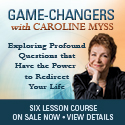






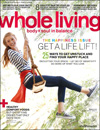
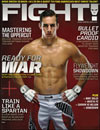

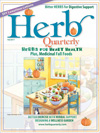
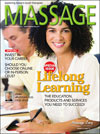

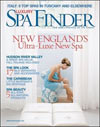
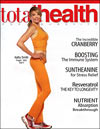






1 Comments:
What a wonderful post! To hear the stories of people who had the magical experience of meeting our Reiki elders is very meaningful. Thanks.
Lynda
Reiki Goddess
Post a Comment
<< Home